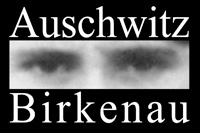




Oświęcim
Polish city located 70 km west of Cracow. On the eve of the war it numbered about 14,000 inhabitants, more than half of whom were Jews. When the city came under German occupation, it was annexed to the German Reich by administrative order and renamed Auschwitz. Many members of the local intelligentsia were sent to German concentration camps. From the spring of 1940, in connection with preparations for opening a concentration camp at the site of the old Polish Army barracks located on the outskirts of the city, expulsion operations were held. In 1941, all the Jews were taken away from Oświęcim by the Germans. German colonists appeared in Oświęcim as white‑ and blue‑collar workers at the IG Farben plant. Construction began on a new residential district for them, which was envisioned as the forerunner of the future Musterstadt Auschwitz—a German “model city.” Until 1944, workers from the General Government—Poles and Ukrainians—as well as others from France, Belgium, the Netherlands, Denmark, Norway, Italy, Croatia, Bohemia, Slovakia, Spain, and Portugal, as well as from the parts of the USSR occupied by the Wehrmacht, were brought in and quartered in camps in the eastern part of town.
An organized resistance movement existed in Oświęcim throughout the war, and more than a thousand people from the city and nearby localities provided aid to prisoners.
